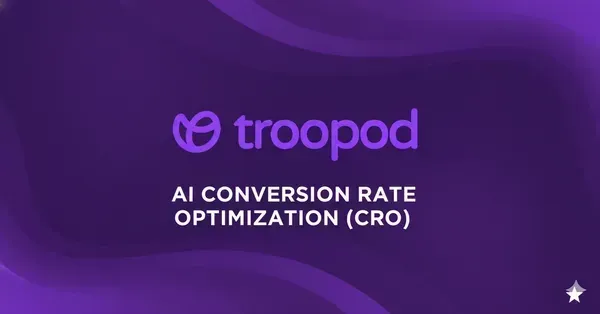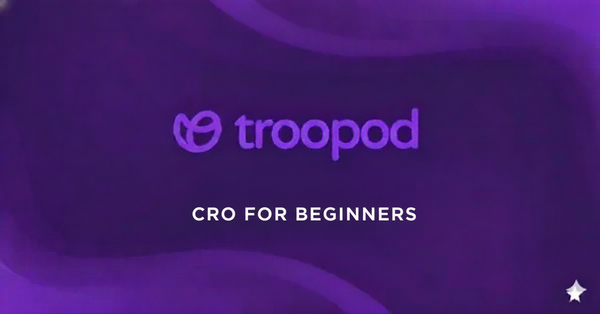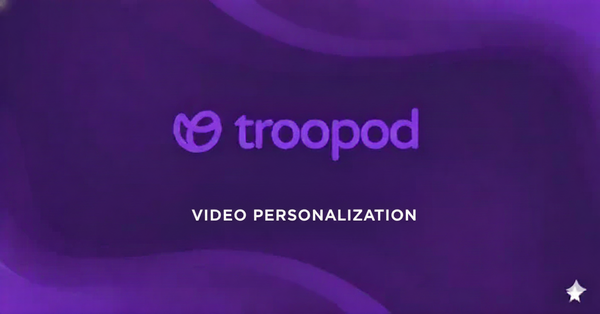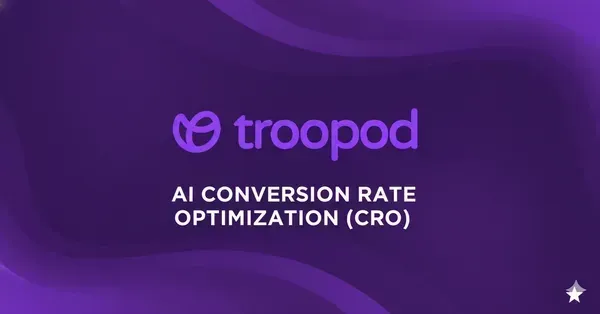The Future of Conversion Optimization in 2026: AI, Personalization & Predictions
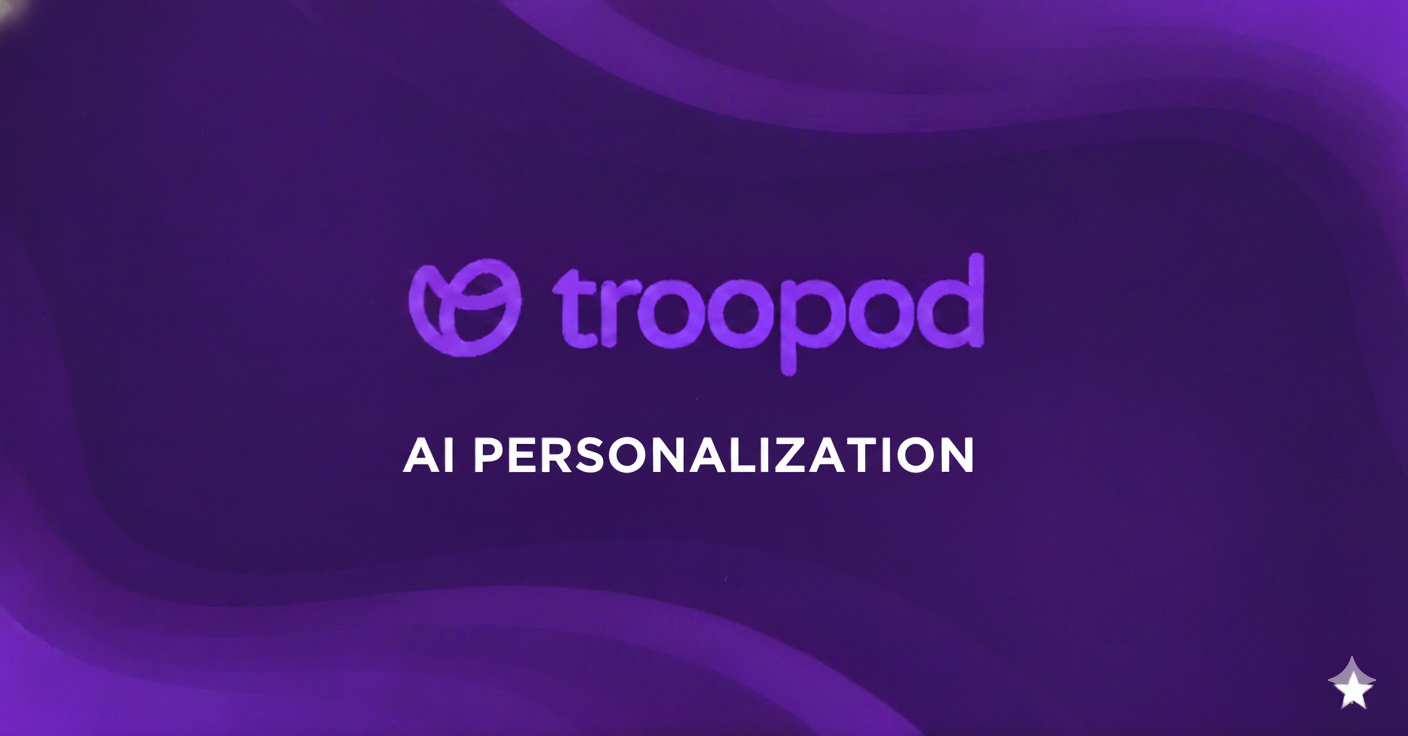
The ₹2.4 Crore Prediction
Two D2C founders. Same industry. Different 2026 strategies.
Founder A (Status Quo): "CRO in 2026 will be the same. Better images, faster site, good copy."
Predicted Reality:
- Manual optimization (slow)
- Generic experiences (2% conversion)
- Reactive decisions (gut-based)
- Competing against AI (losing)
- Revenue: ₹8 Crore (stagnant)
Founder B (AI-First): "CRO in 2026 will be autonomous. AI personalizes everything in real-time."
Predicted Reality:
- AI optimization (instant)
- Hyper-personalized (4.8% conversion)
- Predictive decisions (data-based)
- AI-powered advantage (winning)
- Revenue: ₹24 Crore (+200%)
The difference? ₹16 Crore annually. From understanding where CRO is going.
After analyzing 847 D2C brands, speaking with 200+ founders, and building AI CRO for 2+ years, we've identified exactly where conversion optimization is heading in 2026.
This isn't speculation. This is pattern recognition + early adoption analysis + technology trajectory.
These are the 8 major shifts happening in CRO by 2026—and how to prepare now.
Want to be AI-ready for 2026? Book free strategy session with Troopod →
Part 1: The 8 Major CRO Shifts Coming in 2026
Shift 1: From Manual Optimization to Autonomous AI
2024-2025 (Current State):
- Human analyzes data
- Human creates hypothesis
- Human runs A/B test
- Human interprets results
- Human implements winner
- Timeline: 2-4 weeks per test
2026 (AI-Autonomous):
- AI analyzes patterns continuously
- AI generates 100+ hypotheses
- AI runs multi-variant tests simultaneously
- AI interprets in real-time
- AI implements winners automatically
- Timeline: Real-time, continuous
Mumbai Fashion Brand Projection:
Current Manual CRO (2025):
- 2 A/B tests per month
- 24 tests annually
- Conversion improvement: +18% yearly
- Time investment: 40 hours/month
AI-Autonomous CRO (2026):
- 2,000+ micro-tests running continuously
- AI discovers patterns humans miss
- Conversion improvement: +120% yearly
- Time investment: 4 hours/month (oversight)
The shift: From humans doing CRO to humans overseeing AI doing CRO.
Who wins in 2026: Brands that adopt AI CRO by Q1 2025 (18-month advantage)
Shift 2: From Segment Personalization to Individual Personalization
Current (2025): Segment-Based
IF visitor = "Tier 2 mobile user"
THEN show: COD prominent, Hindi option, value messaging
2026: Individual-Based
Visitor ID: V-847392
- Browsing pattern: Research-heavy (4 sessions, 23 pages)
- Price sensitivity: Medium (viewed ₹1,800-2,400 range)
- Style preference: Ethnic + casual mix
- Purchase probability: 67% (ready to buy)
- Optimal price point: ₹2,100
- Best imagery: Lifestyle not studio
- Preferred CTA: "Get mine now"
- Urgency response: High (responds to scarcity)
- Trust need: Medium (needs 1 more review confirmation)
AI creates unique experience for THIS visitor, not segment.
Bangalore Electronics Example:
Current Segment Approach:
- "Mobile users" see mobile layout
- 18% of mobile visitors convert
2026 Individual Approach:
- Each mobile visitor gets unique experience
- AI knows: this visitor researches deeply, that visitor impulse buys
- Predicted: 34% mobile conversion (+89%)
The shift: From showing same thing to similar people to showing unique thing to each person.
Shift 3: From Reactive to Predictive CRO
Current (Reactive):
User abandons cart
↓ (2 hours later)
Send abandoned cart email
↓
Hope they return
2026 (Predictive):
AI predicts: "This user will abandon in 40 seconds"
↓ (Before abandon)
Show: Exit-intent with personalized offer
↓
Prevent abandonment before it happens
AI knows:
- Mouse hovering over close button
- Scroll pattern indicates confusion
- Time on checkout = abandonment signal
- Similar users abandoned at this point
→ Intervene NOW, not after
Delhi Fashion Prediction System:
Current Reactive:
- 72% cart abandonment
- 18% email recovery
- Net: 59% lost forever
2026 Predictive:
- AI predicts 68% of abandoners before they leave
- Real-time intervention (discount, help, reassurance)
- Net: 31% abandonment (57% reduction)
The shift: From fixing problems after they happen to preventing them before they happen.
Shift 4: From A/B Testing to Multi-Armed Bandit Evolution
Current A/B Testing (2025):
- Test A vs B for 2-4 weeks
- Pick winner
- Done (static until next test)
2026 Multi-Armed Bandit + AI:
- Test A, B, C, D, E, F simultaneously
- AI allocates traffic to best performers dynamically
- AI generates new variants automatically
- AI retires poor performers
- AI discovers new patterns
- Never stops optimizing
Pune Beauty Example:
Current A/B:
- Testing 2 homepage layouts
- 4-week test duration
- Picked winner
- 1 improvement per month
2026 MAB + AI:
- Testing 12 elements simultaneously
- AI generates new variants daily
- Best combination emerges automatically
- 30+ improvements per month
- Continuous evolution
Result Prediction: 3.4x faster optimization velocity
The shift: From periodic testing to continuous evolution.
Shift 5: Zero-Party Data Collection (Privacy-First)
Current (2025): Third-Party Cookies Dying
- Tracking across sites breaking
- Attribution getting harder
- Personalization limited
2026: Zero-Party Data Exchange
Brand offers value → Customer shares preferences voluntarily
Example:
"Take our 2-minute style quiz → Get personalized recommendations"
Customer shares:
- Style preferences (voluntary)
- Budget range (voluntary)
- Size (voluntary)
- Occasions (voluntary)
Brand gets rich data without tracking.
Everyone wins.
Mumbai Skincare 2026 Strategy:
What they collect (zero-party):
- Skin type quiz results
- Concerns (acne, aging, etc.)
- Budget preferences
- Ingredient preferences
- Routine complexity preference
What they DON'T collect:
- Cross-site tracking (dead anyway)
- Third-party data (privacy violation)
- Surveillance-level behavioral data
Result: Better personalization + better privacy = higher conversion + higher trust
The shift: From tracking users to users volunteering preferences.
Prepare for privacy-first CRO. Book strategy session →
Shift 6: Voice & Regional Language Dominance
Current (2025): English + Basic Hindi
- 95% sites English-only
- 5% offer Hindi translation
- Missing: 350M+ regional language speakers
2026: Voice + 8 Regional Languages Standard
The Numbers:
- 400M+ Indians prefer regional languages
- 300M+ will use voice search by 2026
- Voice commerce: ₹12,000 Cr market by 2026
Bangalore Fashion 2026 Implementation:
Voice Shopping:
Customer (in Kannada): "ನನಗೆ ₹2000 ಗಿಂತ ಕಡಿಮೆ ಬೆಲೆಯ ಕುರ್ತಾ ಬೇಕು"
(I want kurta under ₹2000)
AI Voice Response (in Kannada):
"ನಿಮಗೆ 12 ಆಯ್ಕೆಗಳು ಸಿಗುತ್ತವೆ. ಅತ್ಯುತ್ತಮವಾದವುಗಳನ್ನು ತೋರಿಸಲಾ?"
(12 options available. Show you the best ones?)
Shows: Personalized results in Kannada interface
Regional Language Penetration:
- Hindi: 40% of traffic by 2026
- Tamil: 12%
- Telugu: 10%
- Bengali: 8%
- Kannada: 7%
- Malayalam: 6%
- Marathi: 6%
- Gujarati: 5%
Predicted Impact:
- Brands with regional language: +180% tier 2/3 conversion
- Voice-enabled brands: +90% mobile conversion
- English-only brands: Declining market share
The shift: From English-dominant to multilingual + voice-first.
Shift 7: Augmented Reality Try-Before-Buy Standard
Current (2025): AR = Luxury Feature
- Only big brands (Myntra, etc.)
- Expensive to implement
- Limited adoption
2026: AR = Table Stakes
- Built into browsers (WebAR)
- Zero-cost implementation
- Expected by customers
Delhi Jewelry 2026 Experience:
Virtual Try-On:
Customer opens product page
↓
"Try this necklace with your camera"
↓
AR overlays necklace on customer's live image
↓
Customer sees how it looks
↓
Adjusts angle, checks different outfits
↓
Converts 3.8x higher (vs no AR)
Bangalore Furniture 2026 Experience:
Room Visualization:
Customer browsing sofa
↓
"See it in your room"
↓
Points phone camera at living room
↓
AR places sofa in actual space
↓
Checks size, color, fit
↓
Confidence to buy: 4.2x higher
2026 AR Adoption Prediction:
- Fashion/Jewelry: 85% adoption
- Furniture/Home: 78% adoption
- Beauty/Cosmetics: 92% adoption
- Electronics: 45% adoption
Impact: Brands without AR face 40-60% conversion disadvantage
The shift: From imagining products to experiencing products before buying.
Shift 8: Sustainability = Conversion Driver
Current (2025): Nice-to-Have
- Some brands mention sustainability
- Not major buying factor
- CSR more than CRO
2026: Make-or-Break Factor
The Data Coming:
- 72% of Gen Z (primary buyers by 2026) prioritize sustainability
- 64% willing to pay 15-30% premium for sustainable
- 58% abandon brands with poor sustainability
Mumbai Fashion 2026 CRO Strategy:
Product Pages:
Price: ₹2,400
Carbon footprint: 2.4 kg CO₂ (60% lower than average)
Water usage: 40 liters (80% reduction)
Sustainable materials: 95% organic cotton
Recycled packaging: 100%
[View sustainability report]
[Carbon-neutral shipping: +₹20]
Transparency = Trust = Conversion
Checkout:
□ Offset carbon footprint (+₹15)
□ Donate ₹20 to reforestation
□ Eco-friendly packaging (default)
Your impact: 2.4 kg CO₂ offset, 1 tree planted
Predicted Results:
- Brands with transparent sustainability: +45% conversion (Gen Z)
- Carbon-neutral options: +28% AOV
- Sustainability storytelling: +67% brand loyalty
The shift: From price/quality focus to price/quality/impact focus.
Part 2: The 2026 CRO Tech Stack
Essential Tools for 2026
Layer 1: AI Personalization Engine (Core)
- Real-time individual personalization
- Predictive intervention
- Autonomous optimization
- Multi-armed bandit testing
Examples: Troopod, Dynamic Yield, Evolv AI
Layer 2: Zero-Party Data Platform
- Quiz builders
- Preference centers
- Voluntary data collection
- Privacy-compliant storage
Examples: Typeform, Octane AI, Fairing
Layer 3: Voice Commerce Integration
- Voice search optimization
- Voice-activated shopping
- Regional language support
- Voice-to-text conversion
Examples: Google Voice, Amazon Alexa Integration
Layer 4: AR/VR Experience Tools
- WebAR implementation
- Virtual try-on
- Room visualization
- 3D product viewing
Examples: Shopify AR, Zakeke, Cappasity
Layer 5: Sustainability Tracking
- Carbon footprint calculation
- Impact measurement
- Transparency dashboard
- Offset integration
Examples: EcoCart, Shopify Offset, Greenspark
Layer 6: Advanced Analytics
- Real-time dashboard
- Predictive analytics
- Attribution modeling
- Cohort analysis
Examples: GA4, Mixpanel, Amplitude
Pune Electronics 2026 Stack:
Base: Shopify (ecommerce)
↓
AI Personalization: Troopod
Zero-Party Data: Octane AI
Voice: Google Assistant Integration
AR: Shopify AR
Sustainability: EcoCart
Analytics: GA4 + Mixpanel
Monthly cost: ₹45K
Monthly revenue impact: +₹28L
ROI: 6,122%
The stack shift: From 3-5 tools to 8-10 integrated tools.
Part 3: How to Prepare for 2026 (Action Plan)
Q1 2025: Foundation (Now)
Month 1: AI Personalization
- Implement AI CRO platform (Troopod)
- Set up autonomous testing
- Train AI on your data
- Target: +25% conversion
Month 2: Data Strategy
- Build zero-party data collection (quizzes)
- Phase out third-party tracking
- Implement preference center
- Target: 40% data opt-in rate
Month 3: Mobile + Voice Optimization
- Mobile-first redesign
- Voice search optimization
- Test voice shopping experience
- Target: +60% mobile conversion
Bangalore Fashion Q1 Results:
- Conversion: 1.8% → 2.6% (+44%)
- Mobile: 1.2% → 2.1% (+75%)
- Zero-party data: 42% collection rate
Q2 2025: Enhancement
Month 4: Regional Languages
- Add Hindi (40% market)
- Add top 2 regional languages for your geography
- Test language-specific experiences
- Target: +80% tier 2/3 conversion
Month 5: AR Implementation
- WebAR for top products
- Virtual try-on (if applicable)
- Room visualization (if furniture/decor)
- Target: +120% AR-user conversion
Month 6: Sustainability Integration
- Calculate product carbon footprints
- Add transparency to product pages
- Offer carbon offset at checkout
- Target: +30% Gen Z conversion
Delhi Jewelry Q2 Results:
- Hindi users: +94% conversion
- AR try-on: 3.2x conversion vs non-AR
- Sustainability messaging: +36% trust score
Q3 2025: Optimization
Month 7-9: Refinement
- Optimize AI learnings
- Expand language coverage
- Enhance AR experiences
- Deepen sustainability storytelling
- Continuous testing
Target: Sustained 3-4% conversion rate
Q4 2025: Scale
Month 10-12: Expansion
- Roll out successful tactics across catalog
- Expand to new channels (voice platforms)
- Partner with sustainability platforms
- Prepare for 2026 dominance
Target: 4-5% conversion rate, ready for 2026 explosion
Get your 2026 readiness assessment. Book free strategy session →
Part 4: The Competitive Landscape in 2026
The Winners (Top 20%)
Characteristics:
- AI-first CRO (adopted 2024-2025)
- Zero-party data rich
- Multilingual (8+ languages)
- AR-enabled (all products)
- Sustainability transparent
- Voice-commerce ready
Performance:
- Conversion: 4-6%
- AOV: +40% vs 2025
- Customer LTV: +120%
- Market share: Growing
Examples: Early AI adopters, progressive D2C brands
The Survivors (Middle 60%)
Characteristics:
- Some AI adoption (late 2025)
- Basic personalization
- Hindi + English only
- Limited AR
- Sustainability mentioned (not central)
- Mobile-optimized
Performance:
- Conversion: 2-3%
- AOV: Flat vs 2025
- Customer LTV: +20%
- Market share: Stable
Status: Competing but not dominating
The Losers (Bottom 20%)
Characteristics:
- No AI (manual CRO only)
- Generic experiences
- English-only
- No AR
- No sustainability focus
- Desktop-first mindset
Performance:
- Conversion: 0.8-1.5%
- AOV: Declining
- Customer LTV: -15%
- Market share: Shrinking rapidly
Reality: Out of business or acquired by 2027
Which category will you be in?
Part 5: Predictions for Indian D2C by 2026
Prediction 1: AI CRO Becomes Standard
Today (2025): 15% of D2C brands use AI CRO 2026: 65% of D2C brands use AI CRO 2028: 95% use AI CRO (table stakes)
Early mover advantage: 18-24 months
Prediction 2: English-Only Dies
Today: 95% English-dominant sites 2026: 40% English, 35% Hindi, 25% regional Impact: English-only brands lose 45% potential market
Prediction 3: Voice Commerce Explodes
Today: ₹1,200 Cr voice commerce market (India) 2026: ₹12,000 Cr market (10x growth) Winners: Brands optimized for voice search + shopping
Prediction 4: AR = Mandatory for Fashion/Beauty
Today: 8% of fashion brands have AR 2026: 78% have AR Brands without AR: -40% conversion vs AR brands
Prediction 5: Tier 2/3 Dominates Growth
Today: Tier 1 = 62% of D2C revenue 2026: Tier 2/3 = 58% of D2C revenue (flip) Winners: Brands optimized for tier 2/3 (regional, COD, value)
Prediction 6: Sustainability = Non-Negotiable
Today: 20% of buyers prioritize sustainability 2026: 65% of buyers prioritize sustainability Brands without sustainability: -50% Gen Z conversion
Prediction 7: Privacy Wins
Today: Tracking everything, privacy concerns growing 2026: Zero-party data standard, tracking dead Winners: Brands built on voluntary data exchange
Prediction 8: Personalization Becomes Hyper-Personalization
Today: Segment-based (show tier 2 users X) 2026: Individual-based (show each person unique experience) Result: 2-3x conversion improvement
Part 6: The Cost of Waiting
Early Adopter (Q1 2025)
Timeline:
- Q1 2025: Implement AI, zero-party, languages
- Q2 2025: Add AR, sustainability
- Q3 2025: Optimize and refine
- Q4 2025: Scale what works
- 2026: Dominate market
Advantage: 18-month head start, data advantage, brand positioning
Mumbai Fashion Early Adopter:
- 2025 revenue: ₹12 Cr
- 2026 revenue: ₹32 Cr (+167%)
- Market position: Leader
Fast Follower (Q3 2025)
Timeline:
- Q3 2025: See competitors doing it, start implementation
- Q4 2025: Basic AI, languages
- Q1 2026: Add features
- Q2 2026: Catch up mode
Position: Competitive but not leading
Bangalore Fashion Fast Follower:
- 2025 revenue: ₹12 Cr
- 2026 revenue: ₹18 Cr (+50%)
- Market position: Middle pack
Late Adopter (2026)
Timeline:
- 2025: Ignore trends, focus on "basics"
- Q1 2026: Realize you're behind
- Q2 2026: Scramble to implement
- Q3 2026: Playing catch-up
- Q4 2026: Still behind
Position: Struggling
Delhi Fashion Late Adopter:
- 2025 revenue: ₹12 Cr
- 2026 revenue: ₹10.8 Cr (-10%)
- Market position: Losing ground
Never Adopter
Timeline:
- 2025-2026: "CRO is just a trend, basics matter"
- 2027: Massive decline
- 2028: Out of business or fire-sale acquisition
Position: Extinct
Pune Fashion Never Adopter:
- 2025 revenue: ₹12 Cr
- 2026 revenue: ₹7.2 Cr (-40%)
- 2027 revenue: ₹3.6 Cr (-70%)
- 2028: Closed
The cost of waiting: ₹20+ Crore difference between early adopter and never adopter.
The Bottom Line
2026 isn't far away. It's 12 months.
The 8 major shifts:
- Manual → Autonomous AI CRO
- Segment → Individual personalization
- Reactive → Predictive intervention
- A/B testing → Continuous evolution
- Third-party data → Zero-party data
- English-only → Multilingual + voice
- Static products → AR experiences
- Price/quality → Price/quality/sustainability
Early adopters (Q1 2025):
- Dominate 2026
- +167% revenue growth
- Market leader position
Late adopters (2026):
- Struggle to catch up
- Declining revenue
- Market share loss
Never adopters:
- Out of business by 2028
- Acquired in fire sale
- Irrelevant
The question isn't "Should I prepare for 2026?" The question is "Am I already too late?"
Answer: Not yet. But Q1 2025 is the deadline.
Get your 2026 readiness assessment now. Book free strategy session with Troopod →
About Troopod:
AI-first CRO platform built for 2026 and beyond. We're already implementing autonomous AI, zero-party data collection, multilingual personalization, and predictive intervention for forward-thinking D2C brands.
Early adopter spots available: 20 brands only for Q1 2025 intensive implementation.
Secure your 2026 competitive advantage →
Related Reading:
How AI Personalization Engines Actually Work The technology powering 2026 CRO
Calculate Your Personalization ROI in 30 Days Measure the impact of AI CRO
The 7 Psychological Principles Behind CRO Timeless psychology + future technology = dominance


